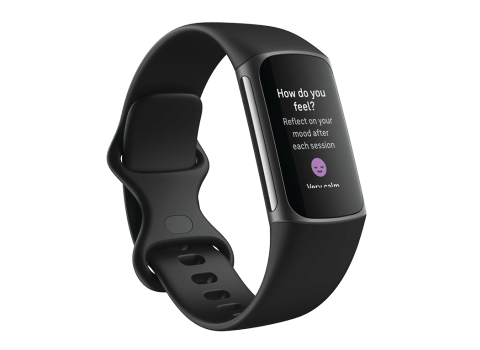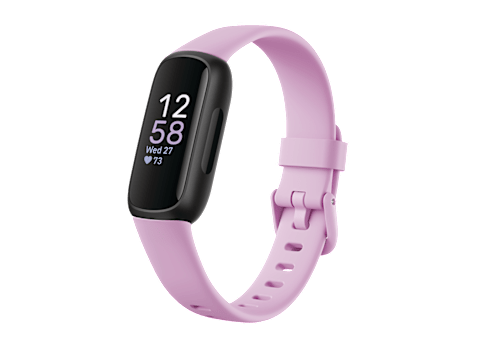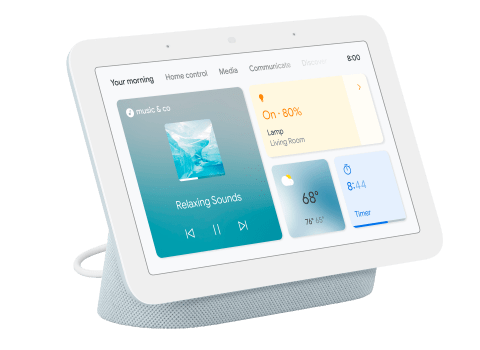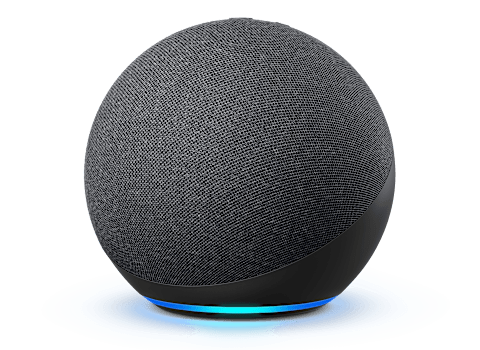Control the racing thoughts in your head with these expert-backed calming strategies (and no need to count sheep).
As with work and exercise, sleep is best when you’re in the right frame of mind.
By Joanne Chen
If you can’t fall asleep because you’re replaying all the drama of the next day in your head, you’re not alone. I’m right there with you, along with four in 10 Americans, according to a nationally representative survey of 2,084 US adults conducted by Consumer Reports in October 2022. In fact, 42% of Americans say their problem most common in the last 12 months is that thoughts run through your mind at bedtime and keep you awake.
The truth is that it is not enough to prepare physically for sleep, you must also do it mentally. No matter how well you relax and settle into your sheets, your mind can take on a frantic life of its own at night: repeating awkward work conversations, freaking out about climate change, worrying about to-dos. Racing thoughts at bedtime can create a host of emotions that have many physical repercussions.
“When we’re anxious, our nervous system activates the fight-or-flight response,” says Maren Hyde-Nolan, PhD, a sleep psychologist at Henry Ford Health in Detroit. Our blood pressure goes up; our heart rate accelerates. Stress hormones run through our veins. How can anyone sleep with all this going on? In fact, it is impossible. “You can’t be anxious and calm your body at the same time, and you can’t sleep when your body’s fight-or-flight response is activated,” adds Hyde-Nolan.
Breathing exercises to calm racing thoughts
One way to calm racing thoughts in your brain is to focus on the body, specifically slowing and lengthening your breath. “This way, you moderate the release of those stress-inducing hormones so that the parasympathetic part of the nervous system can take hold,” says Michelle Drerup, MD, director of behavioral sleep medicine at the Cleveland Clinic. Your heart rate slows down. Your blood pressure drops. As your body relaxes, your mind calms down as well, all of which help ease your transition to sleep.
There are a wide variety of breathing techniques to try, but the following two have worked particularly well for me when I can’t fall asleep. Practice them during the day so that you feel more comfortable turning to them at night. tips Bonus: Beyond engaging the body, these exercises also give your mind something to focus on that’s far more tangible than an imaginary sheep, as Drerup points out. And what to do when an annoying thought crosses your mind? Be aware briefly and bring your attention back to your breath.
Square or quadrilateral breathing. Before you begin, exhale to let all the air out of your lungs. Then breathe in slowly through your nose (or however you feel comfortable) for a count of four. Exhale through your mouth while counting to four. Hold your breath for a count of four. And repeat. Drerup suggests imagining a line being slowly drawn to form a square with each inhale, exhale, and hold, a tip I’ve found especially helpful.
The 4-7-8 method. This is my favorite strategy, one I resort to when I can’t sleep at 3 am. Breathe in for a count of four. Hold your breath for a count of seven. Exhale counting to eight. I breathe in through my nose and out through my mouth, but experts say you should go with whatever strategy is most comfortable for you.
More strategies to control racing thoughts
While paying attention to your breathing is important, it often helps to incorporate mental exercise as well. What works, says Drerup, is something that engages your brain enough to distract you from your racing thoughts, but not enough to keep you from falling asleep. The next time you find yourself staring at the ceiling, try one of the techniques below. “Keep in mind that not everything will work all the time. So you may have to change your strategies overnight,” says Drerup.
Count backwards. As you take slow, long breaths, count backwards from 1000. This requires concentration to do, so your mind won’t easily drift into racing thoughts. If you lose count, don’t worry. Just go back to where you think you left off and continue the countdown.
Imagine your favorite place. This exercise is a derivative of the guided imagery technique in mindfulness meditation, a practice in which you focus your thoughts on an idea or object. So try to be specific: a secluded beach on Cape Cod, your childhood library, a coffee shop down the street. Whatever your happy place is, imagine yourself in it and mentally note every detail, using all your senses: the blue of the sky, the texture of the sand, the smell of the sea, etc. “You’re engaging all your neural pathways so other thoughts don’t get in,” adds Drerup.
Get a body scan. You can go from head to toe or vice versa. “Focus on one area of your body at a time, allowing yourself to fully relax before slowly moving on to the next area,” Hyde-Nolan recommends. (This technique works very well for me, and I rarely go to the opposite extreme.)
Listen to a bedtime story. I was quite hesitant when I first heard about this technique. This would never work! But for over a year, I have turned to her over and over again. You can find free stories on the YouTube channel of popular meditation apps (including Calm’s tour of New Zealand’s South Island with “Game of Thrones” actor Jerome Flynn, and Headspace’s visit to an antique shop at a rainy day with someone named Simon). However, for a wider selection on your smartphone, you’ll have to pay for a membership, which I reluctantly did (but for me, it was worth it). Like the previous techniques, listening to calming stories “can help both distract the mind and relax the body at the same time,” Hyde-Nolan says. I like that they often incorporate breathing exercises as well.
How to stop racing thoughts with the help of everyday items
All the strategies that we have mentioned can be done on your own, without the need for an instructor or applications. Still, a little guidance can go a long way, especially if mindfulness techniques are new to you.
The strongest (and obvious) source of guidance comes from popular meditation apps, including Calm, Headspace (my favourite), and Insight Timer (all have free and premium options; as with all apps, be sure to read the privacy policy). privacy) . You may also want to take advantage of free online resources such as exercises from Dartmouth University and UCLA Health.
Beyond smartphones, fitness trackers and smartwatches also help users to wear them for rest rather than just exercise. For example, Fitbit Charge 5 It’s designed to track all things wellness, including sleep and stress. (To read more about those capabilities, check out our internal review of the exercise band.) That said, to get the best fitness deals, you’ll need to shell out some extra money to access the Fitbit Premium app. Fortunately, you can sign up for a 90-day free trial, plenty of time to learn breathing exercises and even some meditation basics. Even if you choose not to renew, at least you’ll have access to the Calm app (a Fitbit partner). If you are not interested in the stress reduction option, then you might consider the fitbit inspire 3, which is less expensive. All versions of the popular Apple Watch also come with mindfulness options. Read more about these devices in the best fitness trackers of 2023 and the best smartwatches of 2023.
Fitbit Charge 5
fitbit inspire 3
As you’d expect with digital assistants that do just about everything, they can also help you focus on your breathing and calm your mind. An example, the Google Nest Hub smart speaker (2nd generation). You can simply say, “Hey Google, start a meditation,” and it’ll offer you a small variety of options, including a body scan (courtesy of the Calm app) with breathing guidance. You can also access YouTube content (like the bedtime stories from Calm and Headspace, mentioned above) or use the screen as a sunrise alarm clock. Set to Sleep Sensing mode, it can even track your sleep, thanks to built-in sensors that detect your every breath and movement. (Learn more about how Google Nest Hub works in our internal review.)
Google Nest Hub (2nd Gen)
“If letting a digital assistant track your sleep gives you the creeps, or if you just don’t want a screen (and camera) in the bedroom, there are other options,” says Allen St. John, who writes about technology, including the technology of the dream for CR. You can opt for an audio-only speaker, like the Google Nest Audio, which offers meditations with the same command; or the amazon-echo powered by Alexa, for which you have the option to purchase third-party meditation apps. Note: If you want to bring a smart speaker or display into your bedroom, “make sure you know how to turn off the microphone and/or camera to help protect your privacy,” adds St. John. (Check out the best smart speakers.)
Amazon Echo (4th Gen)
Many alarm clocks also have great bedtime features. For example, you can set the iHome Zenergy Sunrise ($59.99 from Amazon, Best Buy and Walmart) in “sunset mode” to calm your room with warm light. But it also has a feature that guides you through a 4-7-8 breathing exercise. At bedtime, you can choose from 15 soothing sounds to mask disturbing ambient noises and help you drift off to sleep. The controls aren’t the most intuitive, but once you get the hang of it, the Zenergy can become the sleep aid you never knew you needed.
Tips to sleep better
Often, what you do before bed is what will help you get a good night’s rest.
Consumer Reports is an independent, nonprofit organization that works side by side with consumers to create a fairer, safer, and healthier world. CR does not endorse products or services, and does not accept advertising. Copyright © 2023, Consumer Reports, Inc.
Consumer Reports has no financial relationship with the advertisers on this site. Consumer Reports is an independent, nonprofit organization that works with consumers to create a fair, safe, and healthy world. CR does not endorse products or services and does not accept advertising. Copyright © 2023, Consumer Reports, Inc.



